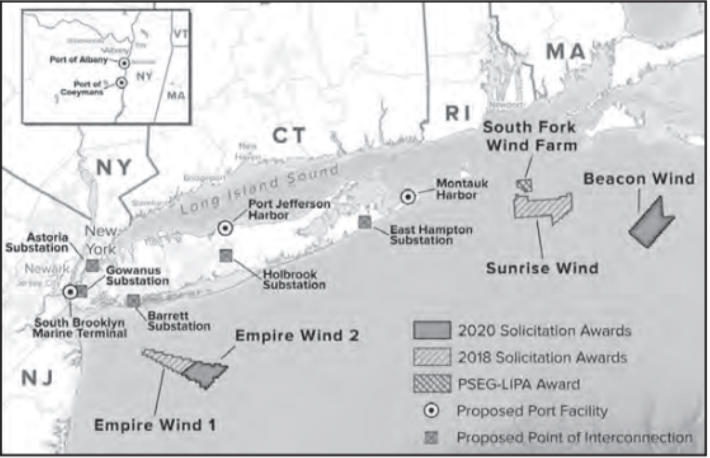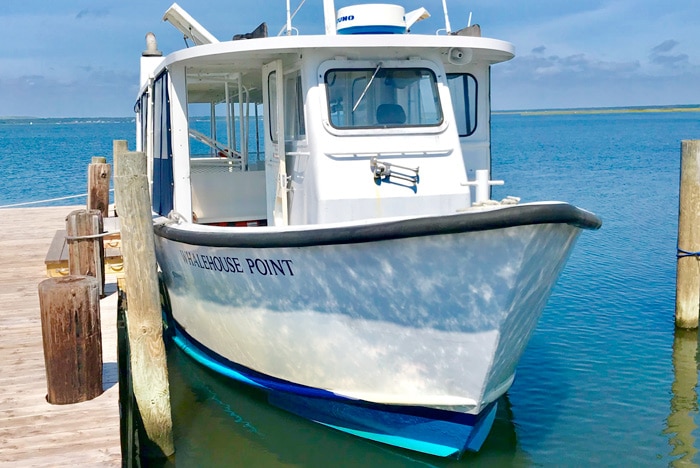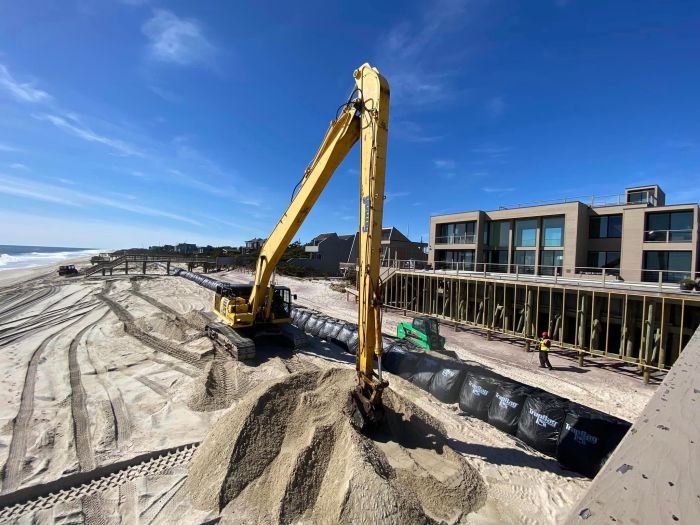
After years of fits and false starts, the latest version of plans to build a wind farm off the coast of Fire Island appears to have smooth sailing ahead, based on recent developments.
Empire Wind 2 – one of two Empire Wind offshore wind farms proposed to be built in the Atlantic Ocean about 15 to 30 miles off the coast of western Fire Island – is among the next batch of similar projects in the pipeline. It follows recent approvals for the South Fork Wind project, which was subject of a groundbreaking ceremony in the off season across town where the cable will come ashore in Wainscott, and a new federal initiative designed to expedite such plans.
“Combatting the threat of climate change requires partnership and collaboration, and I applaud President Biden and his administration for their continued efforts to bring together diverse stakeholders to ensure we advance offshore wind projects and develop key elements of the supply chain so that we can restore our country’s manufacturing competitiveness and further spur the green economy of the future,” Gov. Kathy Hochul said on June 23.
New York is among 11 states that the feds inked the partnership with in a bid to fast-track offshore wind farm development. Empire 1, which is situated more south of the Jones Beach and Long Beach barrier islands, is awaiting final approvals along with Empire 2. Empire Wind’s development comes after the 130-megaway South Fork Wind, the first offshore wind project in the state, is expected to go online next year 30 miles off the coast of Montauk. They are part of the state’s goal to develop 9,000 megawatts of offshore wind by 2035. The Block Island Wind Farm, first offshore wind farm in the nation, went online in 2016 off the coast of Rhode Island.
Empire Wind is a joint venture between Equinor and bp. The two sites spanning a combined 80,000 acres with water depths between 75 and 135 feet are expected to generate more than 2 gigawatts – enough to power 1.5 million homes. Equinor will serve as the operator through the development, construction, and operations phases.
Houston-based Kirby Offshore Wind signed an agreement in March to provide barge transportation services for offshore wind towers and turbines to Maersk Supply Service, which has been selected as the installation contractor for the project. Kirby’s feeder barges and tugboats will transport the wind towers and turbines from the South Brooklyn Marine Terminal to a specialized Maersk wind turbine installation vessel.
“Maersk’s wind turbine installation vessel is the first of its kind and will set a new standard for the efficiency of wind farm installations,” said Jonas Munch Agerskov, chief commercial officer at Maersk Supply Service. “The efficiency gains are made possible as the installation vessel can stay on location at the wind farm, while only the tugs and barges transport equipment to and from the port.”
The companies involved are optimistic for what the future will bring for the region’s fledgling offshore wind farm industry.
“Offshore wind in the U.S. has tremendous potential for significant growth during this decade and beyond,” said Christian O’Neil, Kirby’s president of Marine Transportation. Kirby and Maersk expect wind turbine installations and the associated feeder barge services to commence beginning in late 2025 or early 2026 once the construction of Maersk’s new WTIV is completed. While businesses cheer the jobs created as part of these projects, policymakers tout the environmental benefits.
“New York is committed to establishing a robust offshore wind industry and supply chain that benefits projects along the East Coast and beyond,” Hochul said. “Expanding these efforts across the region will create good-paying jobs, improve air quality and reduce pollution while allowing our states to meet our shared climate and offshore wind goals.”
The projects follow prior attempts to build offshore wind farms off the coast of Long Island that were met by opposition from critics that complained the turbines would be visible from the shoreline. Critics of the latest iteration include commercial fishing companies worried about the impact on local fisheries and some environmentalists concerned with the unintended consequences of industrializing the ocean.
“These facilities operate on land, where people and our developments and demands for power live, along with the messes we’ve created,” Steven Resler, a retired NY Department of State coastal manager, told this reporter. “They don’t belong in, on, or over the water. Where do they belong on land? Mixed with other energy generating facilities (including solar) in industrial areas, along energy generating transmission corridors outside of residential areas, along major transportation corridors such as interstate and certain state highway medians and right of ways, former landfill sites, and other areas not previously developed.”






























